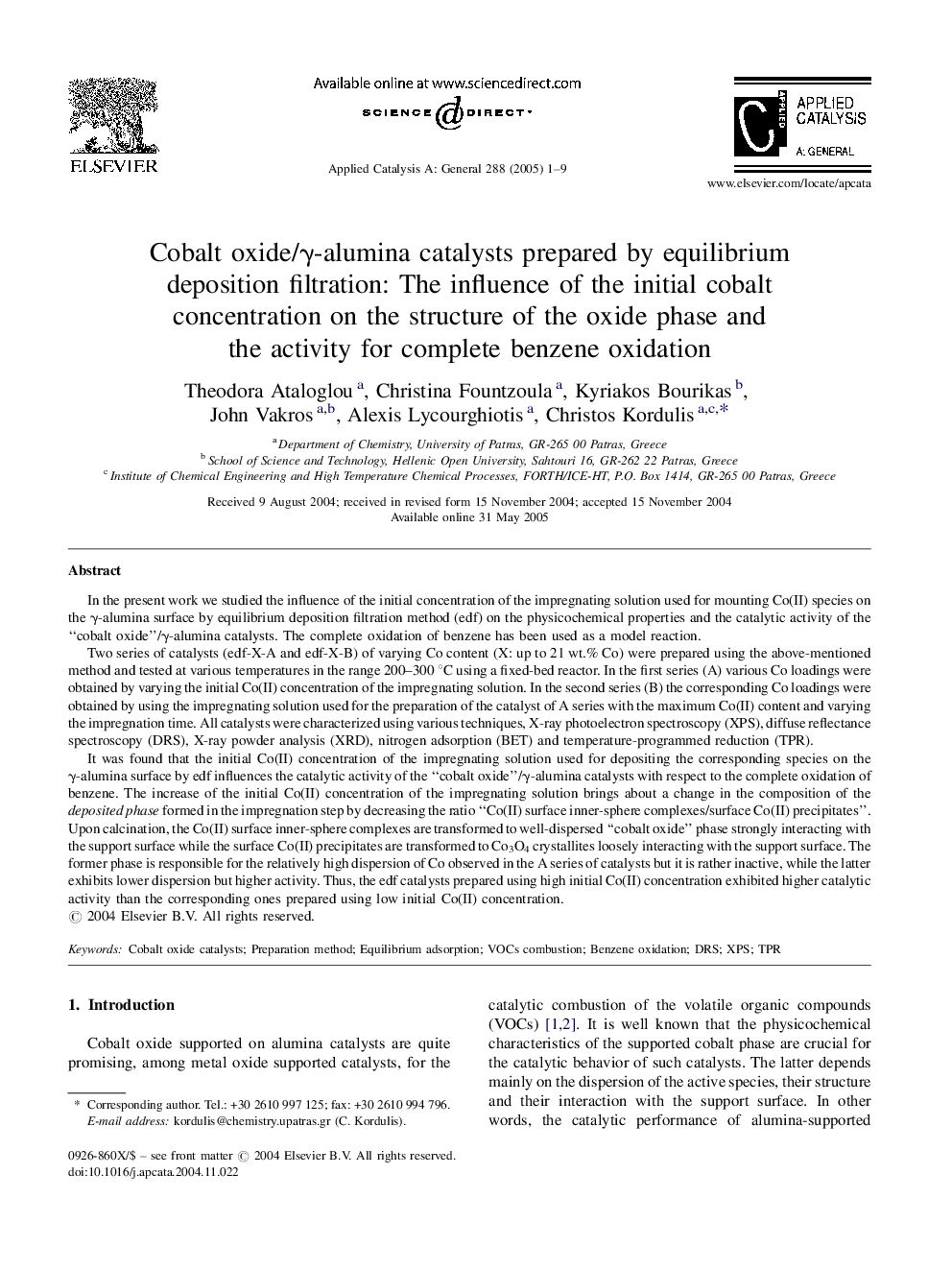| Article ID | Journal | Published Year | Pages | File Type |
|---|---|---|---|---|
| 9607907 | Applied Catalysis A: General | 2005 | 9 Pages |
Abstract
It was found that the initial Co(II) concentration of the impregnating solution used for depositing the corresponding species on the γ-alumina surface by edf influences the catalytic activity of the “cobalt oxide”/γ-alumina catalysts with respect to the complete oxidation of benzene. The increase of the initial Co(II) concentration of the impregnating solution brings about a change in the composition of the deposited phase formed in the impregnation step by decreasing the ratio “Co(II) surface inner-sphere complexes/surface Co(II) precipitates”. Upon calcination, the Co(II) surface inner-sphere complexes are transformed to well-dispersed “cobalt oxide” phase strongly interacting with the support surface while the surface Co(II) precipitates are transformed to Co3O4 crystallites loosely interacting with the support surface. The former phase is responsible for the relatively high dispersion of Co observed in the A series of catalysts but it is rather inactive, while the latter exhibits lower dispersion but higher activity. Thus, the edf catalysts prepared using high initial Co(II) concentration exhibited higher catalytic activity than the corresponding ones prepared using low initial Co(II) concentration.
Keywords
Related Topics
Physical Sciences and Engineering
Chemical Engineering
Catalysis
Authors
Theodora Ataloglou, Christina Fountzoula, Kyriakos Bourikas, John Vakros, Alexis Lycourghiotis, Christos Kordulis,
